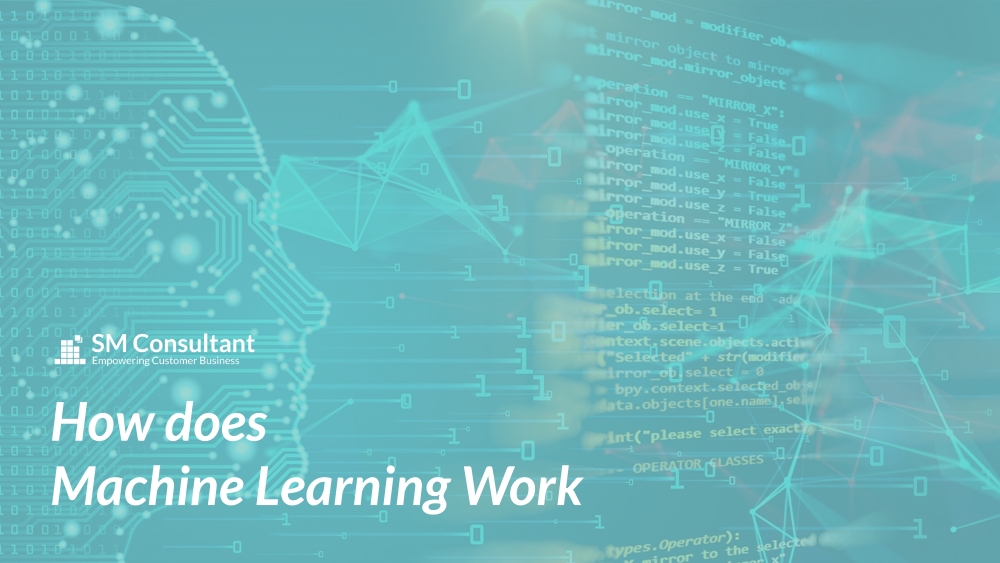Introduction
Machine Learning is a technique of converting raw information into valuable knowledge. Machine learning algorithms employ historical data as input and speculate output values. These grant devices the potential to learn from their experiences and boost without any operation of coding. For Instance, when you shop from any online website, it gives recommendations according to your preferences.
Machine Learning is used in our daily life which includes fraud detection, spam filtering, malware threat detection, and many more.
While machine learning algorithms can register complex algorithms to data applications during more recent development.
Now you may wonder: how does machine learning work? Don’t fret over this! We have put together our observation. We can layout the quintessential process used in Machine Learning.
Machine learning is a subset of Artificial Intelligence that operates in the same manner as a human brain. Its functioning involves identifying data and patterns with minimal human interaction.
Machine Learning is important for establishing an association between the consumer and service providers consumer’s information intact with themselves. For example, online fraud detection and other video streaming platforms.
Machine learning works in the same manner as algebra works. Let’s understand the functioning with the help of a simple example. Suppose, the input (X) and the output (Y) are programmed.
Working on machine learning entails mainly two types of techniques: Supervised and unsupervised learning.
1.Supervised Machine Learning
This technique of Machine Learning can be defined as a task of learning that permits you to either collect or produce data from a foregoing machine learning implementation. This algorithm collects input data and sent feedback to output data.
For example, suppose physicians want to predict a heart attack rate per person within a year. They will study previous patient’s data including age, weight, and other medical vital parameters. In concluding so, combine the existing data into a model and predict whether a new person will have a heart attack within a year or not.
2.Unsupervised Learning
This technique of machine learning can be defined as where one requires to add input data and no output variable is required. On contrary to supervised learning that uses human-labelled data, unsupervised learning is self-organization.
For example, when a cell phone operator tries to optimize the locations for constructing a cell phone tower. In doing so, machine learning provides tremendous support in estimating the number of clusters of people relying on the towers.
Apart from these two techniques which are used in the smooth functioning of machine learning. There are three major building blocks of machine learning which are as follows:
- The model: a system which predicts
- The parameters: factors used for making predictions
- The learner: make necessary adjustments in parameters and align to model to make predictions
For a better understanding of the machine learning process, we will take you to step by step through the details of the process.
Step 1: Learning from a training set
This involves sample data for several sets according to their specifications.
This represents the value of the parameters as “X” and “Y” respectively. Then (X, Y) defines the parameters of each set in the training data. This data set is known as a training set. Further data can be used in establishing a fixed minimum value. When these input values are plotted on a graph, we get the desired hypothesis in the different forms such as line, rectangle, polynomial.
Step 2: To detect Error
After hypotheses are detected from a training set, discrepancies and errors must be checked. To detect the error one of these four will possibly happen:
- True Positive: When a result is positive and it accepts the actual data.
- True Negative: When a result is negative and it accepts the actual data.
- False Positive: When a result is positive and it contradicts actual data.
- False Negative: When a result is negative and it contradicts actual data.
How does Machine learning consume data?
Machine Learning algorithms consumed and process data to comprehend the complex structure of businesses, transactions, transportation, and many more.
The most important part of machine learning is its proficiency to detect what human eyes fail to notice.
The algorithms consume data with the number of samples available for learning. The amount of data consumed depends on the problems and type of algorithm you are using.
Conclusion
Machine learning is used by data scientists and developing an effective machine learning is extremely crucial. It’s substantial to have adequate knowledge of machine learning functioning. Because it can provide solutions for many complicated real-world problems.
Suggested Course : Machine Learning
Improve your career by taking our machine learning courses. Learn More
